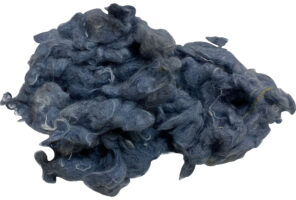Fiber is used as a raw material in manufacturing various other materials. Different fiber-forming materials are combined to make synthetic fiber.
Fiber is used as a raw material in manufacturing various other materials. Different fiber-forming materials are combined to make synthetic fiber. GRS certified fiber creation uses recycled content, making it eco-friendly and safe for sea creatures.
Therefore, to amend this, GRS certification has been introduced in manufacturing various things, including fiber. The Global Recycled Standard (GRS) is a nonprofit product standard that tracks and verifies the recycled content of a finished product. The standard covers the whole supply chain. GRS regulates the processing, manufacture, packing, labeling, trade, and distribution of all items containing at least 20% recycled content. It also establishes rules for third-party recycling content verification, chain of custody, social and environmental norms, and chemical limits. The standard aids firms seeking to validate their goods’ recycled content and acceptable social, environmental, and chemical procedures in their production.
Difference Between Standard Fiber and GRS Fiber
As discussed above, ordinary fiber or other materials are made mainly by using harmful components for the environment, especially marine life. The polymers or plastics used in manufacturing fiber are hazardous to our environment to a great extent. The fumes produced when burning the plastic emits poisonous smoke and can cause significant health and breathing conditions.
GRS certified fibers avoid using any components like polymers as raw materials that cancel out the burning procedure. Moreover, the already manufactured fiber can be used and recycled using machines that don’t emit harmful gases hence no pollution. Similarly, marine life is also saved because there is no waste product. GRS certified fiber has served a great cause.
How is Fiber Get GRS Certificate?


The fibers that receive a GRS certification contain at least 20% recycled polymers. If they don’t, they are not certified with GRS. These kinds of certificates often cause various ethical issues, but GRS certification has no moral disputes. Moreover, only those products are allowed that are environmentally friendly.
In various countries that promote environmentally friendly products, fibers that are not certified by GRS are banned. Consequently, the environment is much cleaner, and the air is fresh to breathe in.
Some people are concerned by the quality difference between standard and GRS fiber. To answer it simply, there is no difference between the quality of GRS fiber and normal one because they are essentially the same components. The main difference is that GRS fiber is made of the same materials, but they are not extracted from the actual raw product but are recycled from already used products.
So, it proves that GRS rating is a must-have in the case of fiber or any other product whose previous manufacturing could harm the environment. It can help get rid of breathing problems and also save a lot of marine life. Therefore, GRS fiber is certainly superior to the standard fiber.
Therefore, to amend this, GRS certification has been introduced in manufacturing various things, including fiber. The Global Recycled Standard (GRS) is a nonprofit product standard that tracks and verifies the recycled content of a finished product. The standard covers the whole supply chain. GRS regulates the processing, manufacture, packing, labeling, trade, and distribution of all items containing at least 20% recycled content. It also establishes rules for third-party recycling content verification, chain of custody, social and environmental norms, and chemical limits. The standard aids firms seeking to validate their goods’ recycled content and acceptable social, environmental, and chemical procedures in their production.


